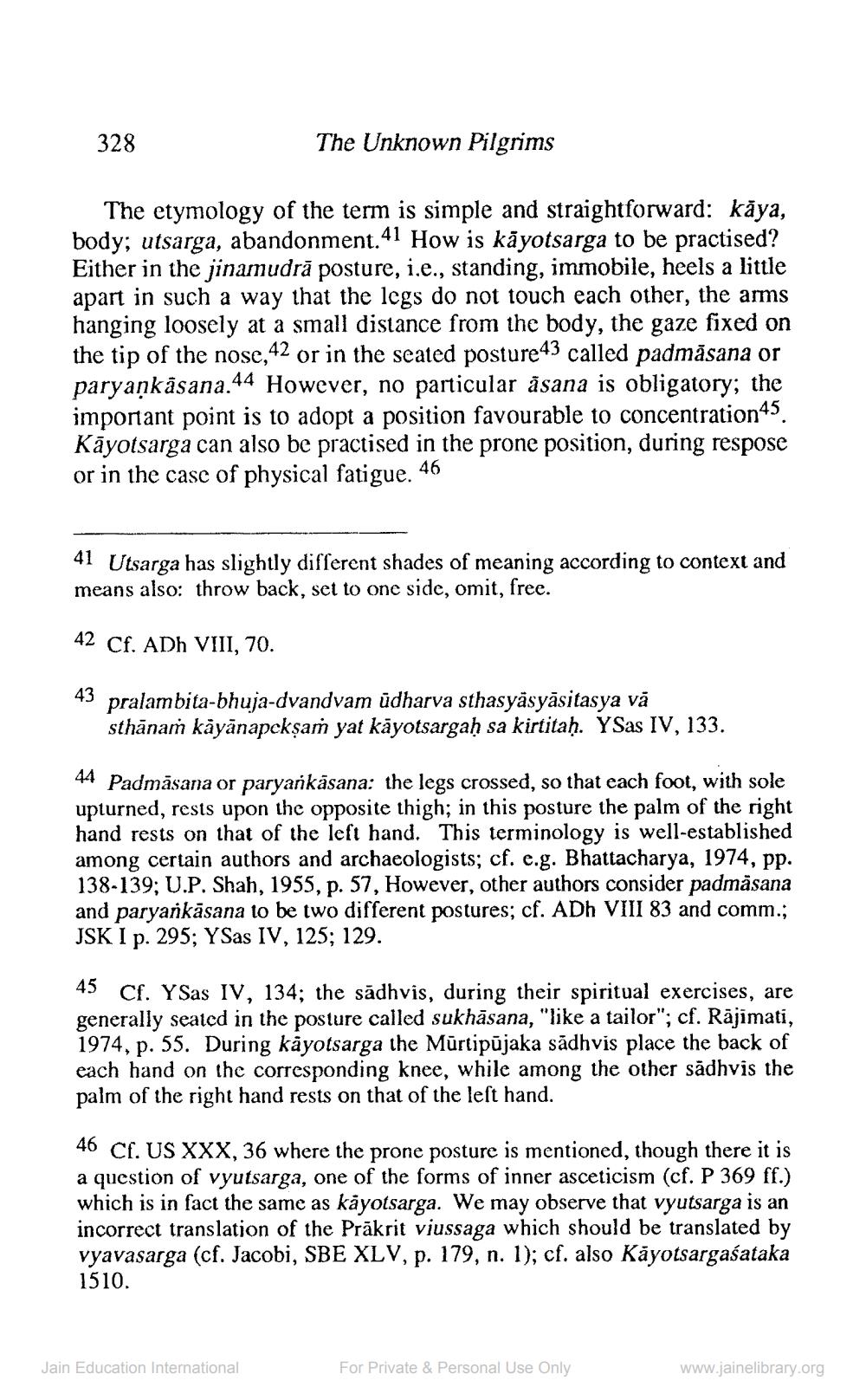________________
The Unknown Pilgrims
The etymology of the term is simple and straightforward: kāya, body; utsarga, abandonment.41 How is kayotsarga to be practised? Either in the jinamudră posture, i.e., standing, immobile, heels a little apart in such a way that the legs do not touch each other, the arms hanging loosely at a small distance from the body, the gaze fixed on the tip of the nose,42 or in the seated posture43 called padmāsana or paryaṇkäsana.4 1.44 However, no particular äsana is obligatory; the important point is to adopt a position favourable to concentration45. Kayotsarga can also be practised in the prone position, during respose or in the case of physical fatigue.
46
328
41 Utsarga has slightly different shades of meaning according to context and means also: throw back, set to one side, omit, free.
42 Cf. ADH VIII, 70.
43 pralambita-bhuja-dvandvam ūdharva sthasyäsyāsitasya vā
sthānaṁ kāyānapckṣaṁ yat kāyotsargaḥ sa kirtitaḥ. YSas IV, 133.
44 Padmasana or paryankäsana: the legs crossed, so that each foot, with sole upturned, rests upon the opposite thigh; in this posture the palm of the right hand rests on that of the left hand. This terminology is well-established among certain authors and archaeologists; cf. e.g. Bhattacharya, 1974, pp. 138-139; U.P. Shah, 1955, p. 57, However, other authors consider padmasana and paryankāsana to be two different postures; cf. ADh VIII 83 and comm.; JSK I p. 295; YSas IV, 125; 129.
45 Cf. Ysas IV, 134; the sadhvis, during their spiritual exercises, are generally seated in the posture called sukhāsana, "like a tailor"; cf. Rājimati, 1974, p. 55. During kayotsarga the Mūrtipūjaka sadhvis place the back of each hand on the corresponding knee, while among the other sädhvis the palm of the right hand rests on that of the left hand.
46 Cf. US XXX, 36 where the prone posture is mentioned, though there it is a question of vyutsarga, one of the forms of inner asceticism (cf. P 369 ff.) which is in fact the same as kāyotsarga. We may observe that vyutsarga is an incorrect translation of the Prakrit viussaga which should be translated by vyavasarga (cf. Jacobi, SBE XLV, p. 179, n. 1); cf. also Kāyotsargaśataka 1510.
Jain Education International
For Private & Personal Use Only
www.jainelibrary.org




